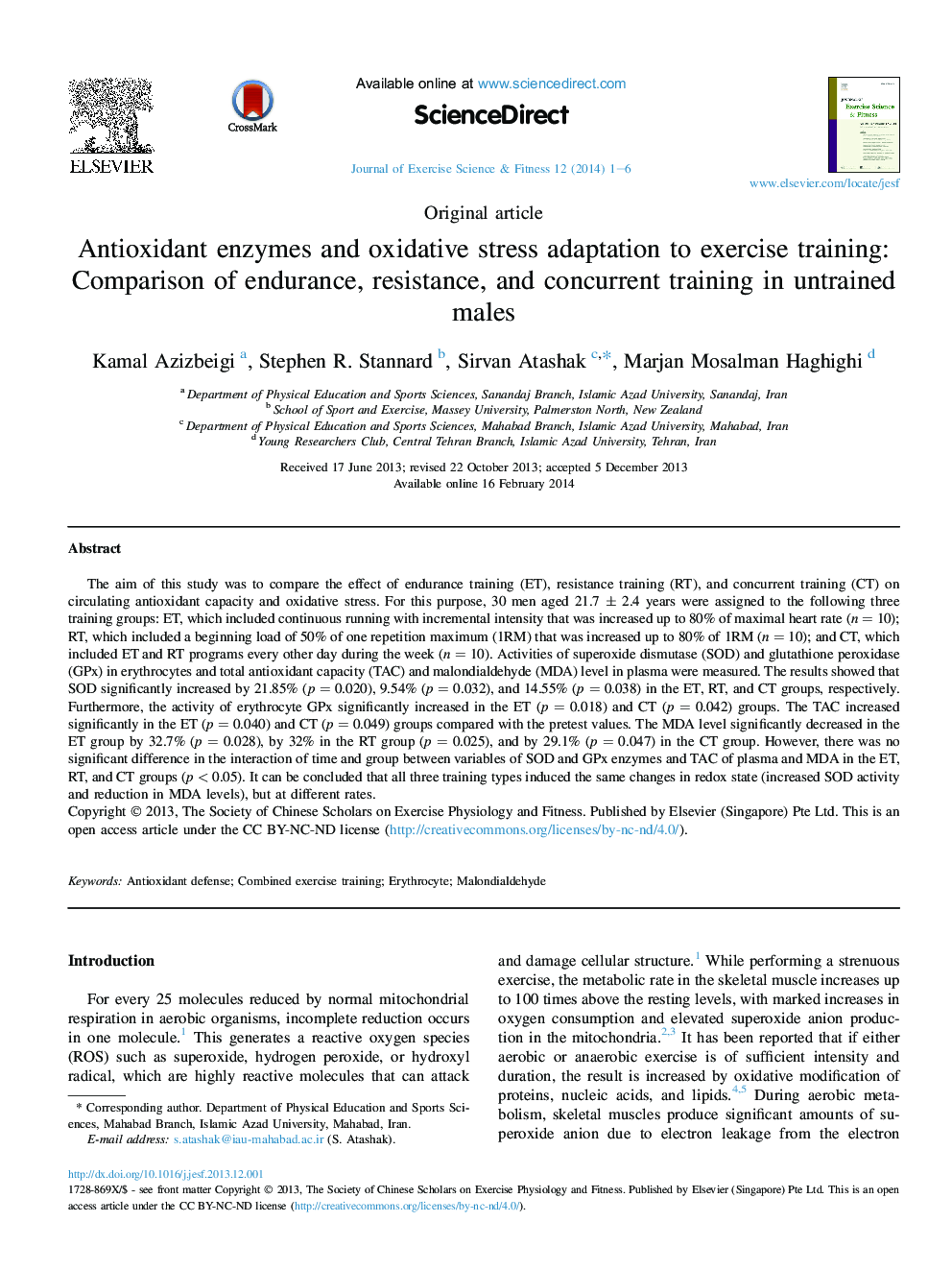| Article ID | Journal | Published Year | Pages | File Type |
|---|---|---|---|---|
| 2739654 | Journal of Exercise Science & Fitness | 2014 | 6 Pages |
The aim of this study was to compare the effect of endurance training (ET), resistance training (RT), and concurrent training (CT) on circulating antioxidant capacity and oxidative stress. For this purpose, 30 men aged 21.7 ± 2.4 years were assigned to the following three training groups: ET, which included continuous running with incremental intensity that was increased up to 80% of maximal heart rate (n = 10); RT, which included a beginning load of 50% of one repetition maximum (1RM) that was increased up to 80% of 1RM (n = 10); and CT, which included ET and RT programs every other day during the week (n = 10). Activities of superoxide dismutase (SOD) and glutathione peroxidase (GPx) in erythrocytes and total antioxidant capacity (TAC) and malondialdehyde (MDA) level in plasma were measured. The results showed that SOD significantly increased by 21.85% (p = 0.020), 9.54% (p = 0.032), and 14.55% (p = 0.038) in the ET, RT, and CT groups, respectively. Furthermore, the activity of erythrocyte GPx significantly increased in the ET (p = 0.018) and CT (p = 0.042) groups. The TAC increased significantly in the ET (p = 0.040) and CT (p = 0.049) groups compared with the pretest values. The MDA level significantly decreased in the ET group by 32.7% (p = 0.028), by 32% in the RT group (p = 0.025), and by 29.1% (p = 0.047) in the CT group. However, there was no significant difference in the interaction of time and group between variables of SOD and GPx enzymes and TAC of plasma and MDA in the ET, RT, and CT groups (p < 0.05). It can be concluded that all three training types induced the same changes in redox state (increased SOD activity and reduction in MDA levels), but at different rates.
